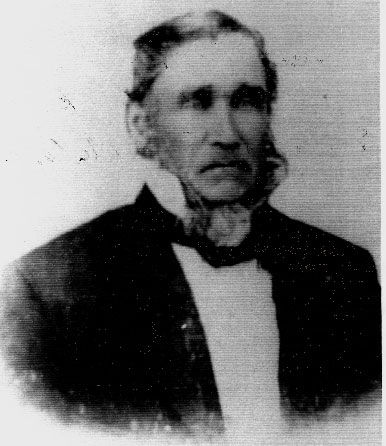“How did Windsor get its name?” This question probably crosses the mind of most every inhabitant of our town at one point or another. However, the historical narrative of the town’s name is often unknown to Windsorites, and some people who think they know the story have some misconceptions. Most people are familiar with the name “Hiram Lewis” (think Hiram Lewis Park), but are in the dark regarding his history and the origins of our town’s name.
An 1877 history of the area, The Historical Atlas of Sonoma County by Thomas H. Thompson, records that Windsor’s first post office was established in 1854 and the first postmaster, Hiram Lewis, named the town. This information was likely provided to author Thompson by local citizens who were living in Windsor when Hiram Lewis delivered mail and named the community. [Hiram Lewis and family had moved on to Oregon during the early 1870s.] Interestingly, Hiram Lewis does not appear in U.S. postal records as Windsor’s first postmaster because the post office was still unofficial in 1854. His son, Sevier Lewis, is recorded as the first official postmaster in 1855, the year Windsor’s first official U.S. post office was established.
Thompson theorized that Hiram Lewis may have chosen the name Windsor “perhaps after Windsor park or forest, as the place was surrounded on all sides by trees, which gave it a park-like appearance.” Perhaps based on Thompson’s supposition, at some point after 1877, an unsourced story spread that Hiram Lewis was born in England and named our town Windsor because the area resembled his home country of England, and its royal Windsor Forest. This thickly wooded area of ancient oak trees protected by the Queen was not to be cut down or removed by anyone — regardless of their social position. The problem with this story is that Hiram Lewis was born in Kentucky, in the US, not England, and there is no evidence that he was ever in Europe.
In an interview with Windsor Historical Society President Steve Lehmann, he said he has “searched long and hard without success” for a trace of the name Windsor as it relates to Hiram Lewis’ background, but he added that a number of local people who have seen England’s Windsor Forest say that area looks a lot like our Windsor. Author Barbara F. Ray (Images of America: Windsor) stated that those similarities were probably also recognized by Hiram Lewis and other pioneers, because during that era Americans were fascinated with England and had access to pictorial articles in newspapers and magazines, as well as photos on stereoscope picture cards, featuring Windsor Castle and Forest.
To correct one more point of misinformation in local lore, Hiram Lewis was not a Pony Express rider. The Pony Express was in operation for only a short period of 18 months, from April 1860 to October 1861, by which time Hiram Lewis had crossed the plains, had a large family, and was settled in Sonoma County. Furthermore, the Pony Express hired strong young men, and Hiram Lewis was comparatively old in the 19th century, in his 50s.
Kylee Faloni, 17, a senior at Windsor High School, is currently working with Barbara Ray, the Windsor Museum and Historical Society, and the Windsor Times to fulfill requirements for her senior project. With a primary interest in writing, Kylee is researching and writing about Windsor history.
Kylee has lived her entire life in Windsor, a community she embraces with great enthusiasm. She is the daughter of Duane and Janine Faloni, who also grew up in Sonoma County, and she has a younger brother, Jacob, 14.
Prior to entering WHS, Kylee attended Windsor Christian Academy from preschool through eighth grade. Next fall she will attend college in Southern California, majoring in English and pursuing a career as a screenwriter, author or journalist. Next summer Kylee will attend a Global Leadership Conference in Berlin, Germany, focusing on the use of technology, which she anticipates will benefit her post-college job search.








